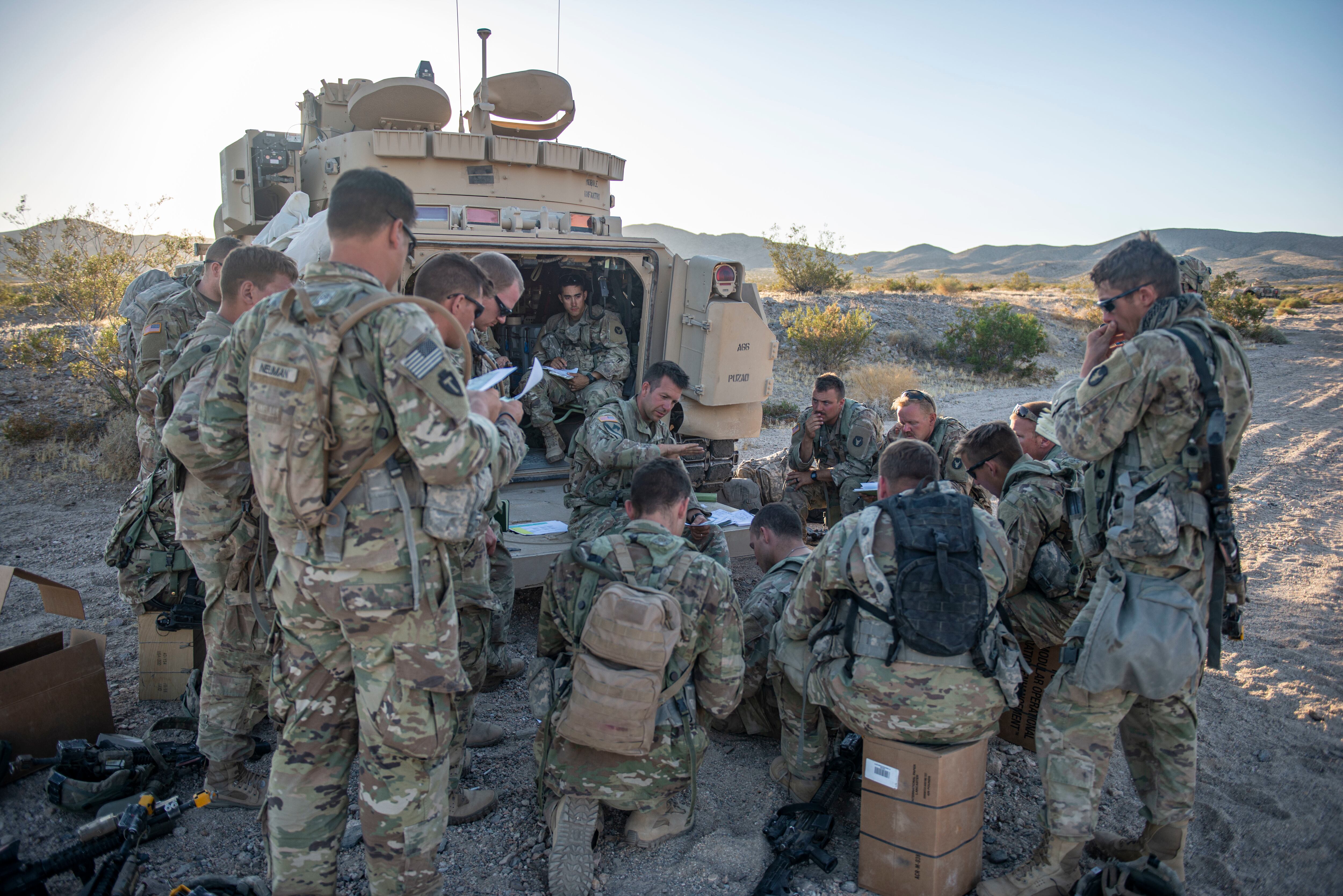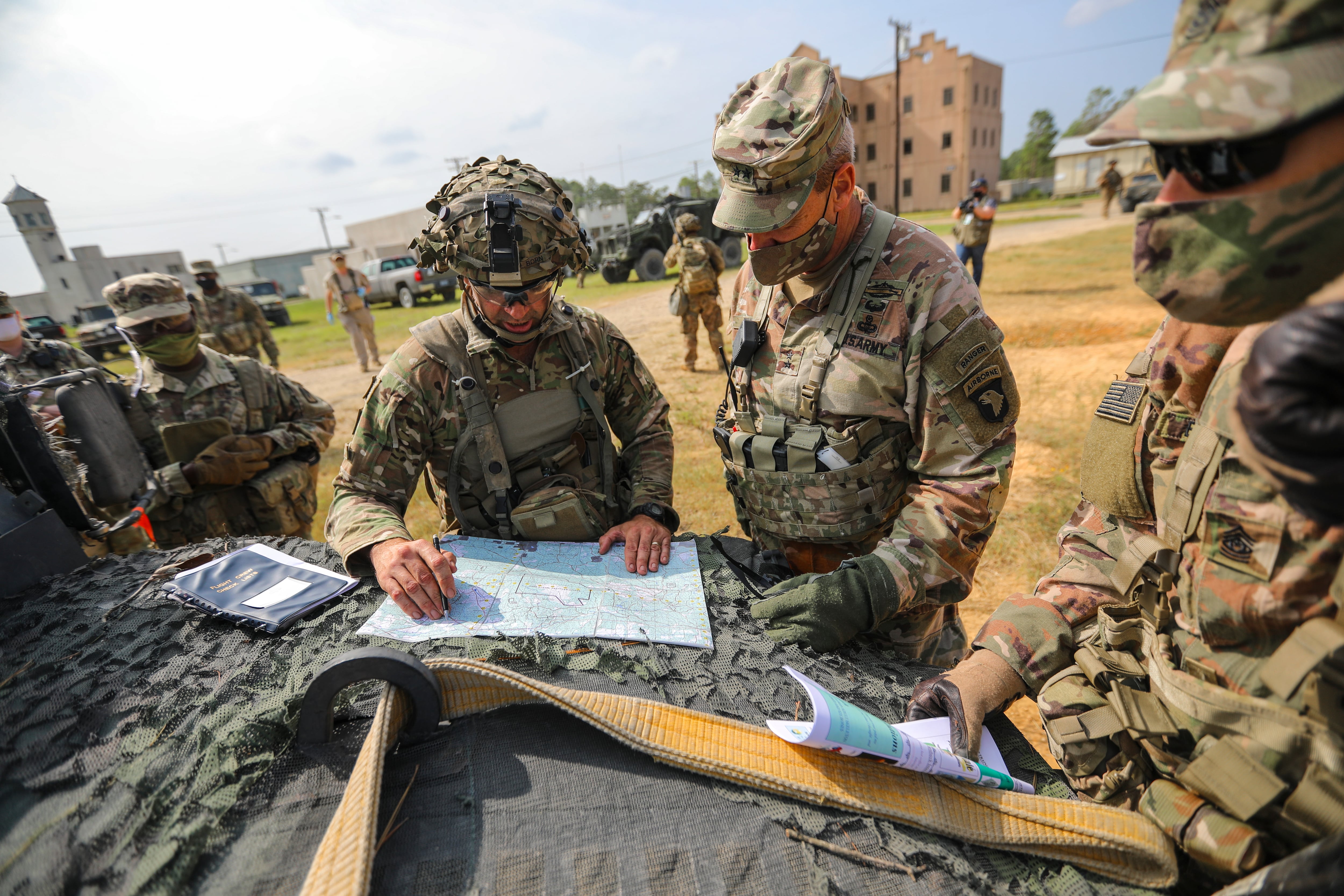Soldiers from 3rd Brigade, 1st Armored Division, have experienced a number COVID-19 cases since arriving to the National Training Center at Fort Irwin, California, though the cases won’t derail the rotation, a unit official said.
Members of the unit departed their home base of Fort Bliss, near El Paso, Texas, about one week ago. Since then, the installation has had to step up its own restrictions, including barring off-base dining and trick-or-treating for Halloween, as El Paso struggles with a surge in COVID-19 cases.
Service officials declined to say the number of positive tests at NTC, or within 3rd Brigade specifically, citing Pentagon restrictions. However, a soldier with knowledge of the situation said there have been about 20 such cases, about half of whom are asymptomatic.
Mitigation measures were taken prior to 3rd Brigade’s departure from Fort Bliss, according to 1st Armored Division spokeswoman Lt. Col. Allie Payne. That included testing the entire brigade two weeks before leaving.
“Providing you specific numbers does not allow accurate reporting because of the significant increase as well as the immediate assistance we’re providing to assist the city,” Payne said in a statement. “What I will offer is the increase within the city is seen within our populations, although not at the same rates or number of cases.”
The soldier familiar with the situation at NTC, who spoke on condition of anonymity, said that although they were tested two weeks before leaving Fort Bliss, many troops’ movements were not tightly restricted.
“Everybody was tested before we came here, but what they did in between their tests and coming here could have been anything,” the soldier said. “You have soldiers who were negative for COVID going back to work, or people going to the grocery store.”
After being tested, soldiers are supposed to strictly limit their contact and exposure with “outside entities," Payne said over the telephone. But a little more than 50 percent of the population on Fort Bliss lives off post.
“Then we have the [second] test right before you leave,” Payne added. “Sometimes those tests come back right away; sometimes they take a little bit longer. … There’s so many of those margins of errors and time for the virus, if you want to say, ‘infiltrate’ these populations."
Jason Miller, a spokesman for Fort Irwin, said the number of cases during this NTC rotation “are consistent with case numbers” they’ve experienced since rotations resumed in July.

Combat training center rotations, in which units conduct brigade-level exercises, were temporarily halted in March as the global pandemic proved difficult to stem in the field and mitigation measures weren’t yet well-developed.
During a media roundtable Monday, Army leaders championed the COVID-19 precautions, including contact tracing, increased testing capacity and isolation measures, taken at CTCs over the past few months.
Maj. Gen. James Jarrard, commander of the Hawaii-based 25th Infantry Division, said during the media roundtable that his 2nd Brigade did not have any COVID-19 cases during their trip to Fort Polk’s Joint Readiness Training Center in Louisiana, which is wrapping up this week.
“We did extensive testing prior to coming [to Fort Polk], and we did identify some soldiers that were positive and so those were quarantined and either came at a later date, or if it was late in the deployment schedule, remained there in Hawaii,” Jarrard said.
Jarrard added that maintaining “self-discipline in all facets of life," including going “shopping, on post or off post" and "coming to work,” helped stem potential COVID-19 cases during recent 25th Infantry Division training events.
Ultimately, one of the best predictors of whether units will experience cases may simply come down to whether or not their surrounding communities are, as well.
RELATED

El Paso County, from where 3rd Brigade, 1st Armored Division, hails, has seen a nearly 160 percent increase in COVID-19 positive rates and a 300 percent increase in hospitalizations since Oct. 1, according to a local government order.
A countywide curfew from 10 p.m. to 5 a.m. is now in place and trick-or-treat activities on Halloween are not allowed, according to El Paso County. Those restrictions were mirrored in a new memo issued this week by 1st Armored Division commander Maj. Gen. Sean Bernabe.
“In light of the most recent decisions of El Paso officials and the restrictions they put in place, I have made the decision to adjust our posture on Fort Bliss,” Bernabe said in a statement. “These changes will ensure we protect the health of our Fort Bliss Community while also supporting and remaining in synch with our El Paso neighbors.”
John Resta, director of the Army Public Health Center, said during an Oct. 14 call with reporters that military infectious disease rates tend to be delayed, but still trend upwards alongside local community numbers.
“The way I described it is, we float on our surrounding communities, we’re just a little further upstream,” Resta said. “So high tide doesn’t reach us just as quick. Most of the time, our rates will lag local communities.”
The Defense Department has been tight-lipped regarding the number of COVID-19 cases at individual installations, citing an alleged threat to national security.
Instead, the Pentagon provides aggregate case numbers for each service since the pandemic began. In the Army, the largest service branch, there were, as of Monday, more than 20,500 cases since the onset of the virus, according to Pentagon data.
Kyle Rempfer was an editor and reporter who has covered combat operations, criminal cases, foreign military assistance and training accidents. Before entering journalism, Kyle served in U.S. Air Force Special Tactics and deployed in 2014 to Paktika Province, Afghanistan, and Baghdad, Iraq.





